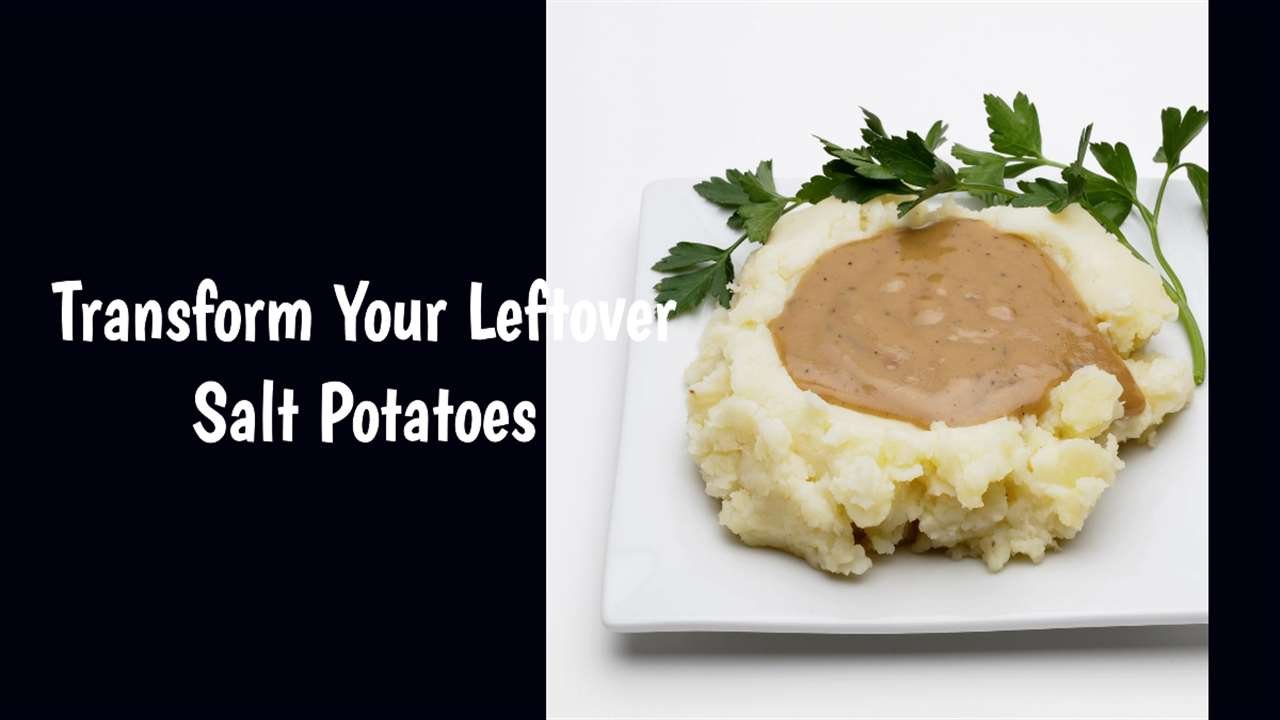Get ready to embark on a culinary journey that transforms humble leftovers into a sensational dish with our Leftover Salt Potatoes Recipe. In this exploration, we’ll delve into the origins of salt potatoes, uncover the magic of turning them into a delectable leftover creation, and guide you through the step-by-step process of crafting a mouthwatering dish. Let’s dive into the world of culinary ingenuity and savor the deliciousness of repurposed salt potatoes.
The Legacy of Salt Potatoes: A Taste of Tradition
Before we dive into the realm of leftover magic, let’s pay homage to the roots of salt potatoes. Hailing from the culinary traditions of Syracuse, New York, salt potatoes have a storied history dating back to the 19th century. Originally a staple among Irish immigrants working in the local salt mines, these potatoes, boiled in brine, became a beloved dish that transcended time and generations.
The Simplicity of Salt Potatoes
What makes salt potatoes iconic is their simplicity. It’s a dish born out of necessity that evolved into a culinary gem. The method involves boiling small, unpeeled potatoes in heavily salted water, resulting in a creamy texture and a salty exterior. Traditionally served with melted butter, salt potatoes are a testament to how the simplest recipes often become cherished classics.
Leftover Alchemy: Turning Salt Potatoes into Culinary Gold
Now, imagine taking the magic of salt potatoes to the next level by transforming them into a leftover masterpiece. This recipe is not just about reheating; it’s about unleashing your creativity and turning yesterday’s side dish into today’s star attraction.
The Canvas of Leftovers
Leftover salt potatoes serve as the blank canvas for our culinary creation. Their slightly salted exterior and creamy interior provide the perfect foundation for reinvention. It’s a testament to the principle that no ingredient should go to waste, especially when it has the potential for a flavorful encore.
Additional Ingredients for Enhancement
To elevate the leftover salt potatoes, consider additional ingredients that complement their natural flavors. Think of herbs like rosemary and thyme, garlic for depth, and perhaps a hint of Parmesan or feta for a touch of indulgence. The goal is to enhance without overshadowing the essence of the salt potatoes.
The Leftover Salt Potato Transformation
The leftover salt potato transformation is an art of balance. It involves reheating the potatoes to revive their creamy texture, infusing them with new flavors, and presenting them in a way that captures attention. It’s about turning a familiar side dish into a culinary surprise.
Crafting Culinary Gold: Leftover Salt Potatoes Reinvented
Now, let’s dive into the step-by-step process of crafting our Leftover Salt Potatoes Recipe. It’s a journey of culinary reinvention, where yesterday’s dish becomes today’s culinary masterpiece.
Step 1: Gather Your Leftover Salt Potatoes
- Retrieve the leftover salt potatoes from the refrigerator. Their slightly chilled state will aid in the transformation process.
Step 2: Reheat and Enhance
- Reheat the salt potatoes in a pan over medium heat. As they warm up, add a generous knob of butter to enhance their richness.
- Introduce additional ingredients like minced garlic, fresh herbs, and a sprinkle of Parmesan or feta. Allow the flavors to meld as the potatoes absorb the new elements.
Step 3: Create a Flavorful Bed
- Consider creating a flavorful bed for your reinvented salt potatoes. This could be a bed of sautéed spinach, a medley of roasted vegetables, or even a base of creamy mashed cauliflower for a low-carb twist.
Step 4: Plate with Panache
- Plate the reinvented salt potatoes with panache. Arrange them in an aesthetically pleasing manner, allowing the enhanced flavors to shine.
Step 5: Garnish and Serve
- Garnish your creation with a final touch of fresh herbs, a drizzle of balsamic glaze, or a sprinkle of additional cheese. The goal is to present a dish that not only delights the taste buds but also pleases the eyes.
Savoring the Transformation: A Culinary Celebration
As you take that first bite of the reinvented salt potatoes, relish in the alchemy of flavors. It’s not just a leftover dish; it’s a culinary celebration that honors the spirit of innovation in the kitchen. The slightly salty, creamy bites, now elevated with new dimensions, offer a delightful surprise with every forkful.
Conclusion: Leftover Salt Potatoes Recipe
In conclusion, our Leftover Salt Potatoes Recipe is a testament to the transformative power of culinary creativity. It showcases how even the simplest of dishes can be reinvented into culinary triumphs with a dash of imagination and a sprinkle of innovation. It’s a celebration of resourcefulness in the kitchen and a reminder that every ingredient, no matter how humble, has the potential to become a star.
For more ideas, recipes, and cooking tips and tricks, please visit us at Lees Donut Shop.
Frequently Asked Questions
Q1: Can I use different herbs for the reinvention process?
Absolutely! The beauty of reinventing leftover salt potatoes lies in customization. Experiment with herbs like thyme, dill, or even a touch of sage to tailor the flavors to your liking.
Q2: Can I add protein to the reinvented dish?
Certainly! Consider adding protein sources like grilled chicken, shrimp, or even tofu to make the dish a complete and satisfying meal.
Q3: How long do leftover salt potatoes last in the refrigerator?
Leftover salt potatoes can be refrigerated for up to 3-4 days. Ensure they are stored in an airtight container to maintain their freshness.
Q4: Can I freeze leftover salt potatoes?
While potatoes can be frozen, the texture may change slightly upon thawing. It’s recommended to consume them within the refrigeration timeframe for the best quality.
Q5: What other sides pair well with the reinvented salt potatoes?
The reinvented salt potatoes pair well with a variety of sides. Consider serving them alongside a fresh green salad, roasted vegetables, or even as a delightful accompaniment to a protein-centric main dish. The options are as versatile as your culinary imagination!

